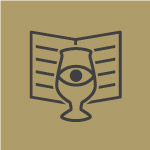These are the words, images, and beers that inspired the GBH Collective this week. Drinking alone just got better, because now you’re drinking with all of us.

READ.// “There is an everlasting mark upon the surface of the ocean...” We’re not really supposed to share our own work for these, but in the tradition of automatic and muse-y poetry, I sort of think this isn’t mine. It’s been a line floating around and resurfacing in my brain like a wet stone for about 15 years now, and it wasn’t until this past Tuesday, like a shot, that it dislodged. In a flurry, parked outside the office, I wrote the poem down as fast as I could and finally gave it a place to live outside my head. Apologies to the goddesses for taking so long to hear it.
LOOK.// “A local guide there once told me about a sacred mountain, Nhamabombe, where rainmakers still go to make rain.” A new national park in Mozambique welcomes its first visitors and young scientists against a backdrop of tradition in a landscape as old as time itself. For these young people working as scientists, conservationists, and guides in the wild, I can only imagine what a lifetime of experience will be like when it starts in a place like this.
DRINK.// Angry Orchard’s Supernatural Cider
We recently hosted our first backyard dinner of spring, and the table was strewn with everyone’s most prized beers, wines, and ciders that had been laying low over the winter. For me, the bright acidity and sparkle of Angry Orchard’s Super Natural Cider best reflected the crisp chill in the air and the warmth of the fire. Naturally fermented and carbonated in the pét nat tradition, this cider shows the best of what the Walden project has to offer up in the Hudson Valley. Alongside a homemade West African red stew, it darted through the heat and sweet potatoes with aplomb.

READ.// “What would convince food writers and influencers to sometimes suggest it’s okay not to eat meat at every meal? What would cause there to be good vegetarian and vegan options at hip restaurants? How do we adjust the narrative on what food is worth eating, essentially, taking into consideration ecology, labor, welfare?” I spent the vast majority of my life not eating meat, and the latest issue (“On Meat”) of Alicia Kennedy’s mind-expanding newsletter, “From the Desk of Alicia Kennedy,” is an eloquent reminder and articulation of many of the reasons why. Meat is bound up in so many complicated ways with national, cultural, gender, and political identities, and Kennedy frequently forces readers to confront these. She also makes me shift uncomfortably in my seat over the fact that I am not a vegan, and the ability to prompt honest and often disquieting self-inquiry is a hallmark of good writing.
LOOK.// The Harvard Divinity School’s YouTube channel is quietly the source of some of the most impactful conversations I’ve heard in the past year, intersecting issues of religion and faith, politics, race, gender, economics, and society—including a fascinating series of discussions on the role of psychedelics in spirituality.
DRINK.// Stoup Brewing’s ONE
ONE is the first offspring from the foeder at Stoup Brewing in Seattle, a subtly complex, barrel-aged Belgian Sour Ale, Brett-conditioned and blended with the brewery’s farmhouse beer. Full-bodied with fruit and floral notes, it stands firmly on its own, yet steps aside when paired with food to provide a subtle backdrop for bold and spicy flavor profiles.

READ.// “Why is it harder to watch a physics lecture than Netflix? Why does a cognitively demanding activity, like playing a video game, create a pleasurable state of flow, while math problems rarely feel that way?” In his recent Medium article, author Scott H. Young examines what our brains interpret as “effort,” based on the comparison of two scientific models.
LOOK.// The ancient Japanese tradition of rock gardening (karesansui) is taken to another level by artist Yuki Kawae, who composes geometric and math-inspired patterns on sand, using pebbles and bamboo rakes. The resulting art forms are as mesmerizing (like the often-referenced symmetric elements in nature) as they are soothing.
DRINK.// Max Graf Brauerei’s Weissbier
Hidden away in the modest city of Parque del Plata in Uruguay’s Costa de Oro, there’s a small brewery called Max Graf, named after founder Carlos’ grandfather: an early 20th-century immigrant from the Bavarian city of Kempten with a brewer’s lineage dating back to the 1840s. The brewery’s Weissbier is a classical example of the style, with a well-balanced banana and clove ratio, fluffy head, and bubbly finish.









